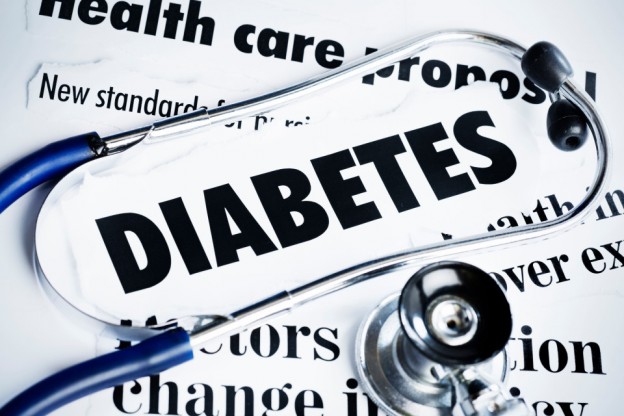Diabetes or diabetes mellitus is a disease which impairs the body’s ability to produce or use the hormone insulin. When the body transforms the food consumed into energy (also called sugar or glucose), insulin is produced to help transport this energy to the cells.
Diabetes, often referred to by doctors as diabetes mellitus, describes a group of metabolic diseases in which the person has high blood glucose (blood sugar), either because insulin production is inadequate, or because the body’s cells do not respond properly to insulin, or both. Patients with high blood sugar will typically experience polyuria (frequent urination); they will become increasingly thirsty (polydipsia) and hungry (polyphagia).
There are two principal types of diabetes:
TYPE 1: In this type, the body is unable to produce insulin. It is also referred to as insulin- dependent diabetes which people develop before their 40th year i.e. either in their early adulthood or teenage years. The main symptoms of type 1 include four Ts:
- Toilet- the need to go toilet more frequently
- Thirsty-excessive thirst which results in increased fluids intake
- Tired-feeling extra tired, lethargic or fatigue
- Thinner-an increased appetite which is not fulfilled even by eating more.
Other symptoms include:
- Genital itching
- Blurred vision
- Skin infections
- Unexpected cramping
- Nausea and vomiting
- Slow healing
Approximately 10% of all diabetes cases are type 1.
TYPE 2: In this type, the body produces insulin but not enough for the proper functioning of the body or the cells in the body fails to react to insulin (insulin resistance). People often develop type 2 diabetes after the age of 45 but in recent years the age of onset has lower. Type 2 is also starting to show up in children.
It is a chronic disease that causes the blood sugar (glucose) to be higher than normal. Most symptoms of type 2 occur when blood sugar levels are abnormally high. People with this condition are more sensitive to recurring infections and sores.
The symptoms of type 2 are similar to type 1 symptom but the chances of being diagnosed with diabetes increases when the person is already suffering from these conditions:
- Being obese or overweight according to their age and height
- Being affected by high blood pressure
- Coming from a family with a history of type 2 diabetes
- Being accustomed to get a deal of rest
Approximately 90% of all diabetes cases are type 2.
Some people may be able to control their type 2 diabetes symptoms by losing weight, following a healthy diet, doing plenty of exercise, and monitoring their blood glucose levels. However, type 2 diabetes is typically a progressive disease – it gradually gets worse – and the patient will probably end up have to take insulin, usually in tablet form.
Overweight and obese people are at a much higher risk of developing type 2 diabetes compared to those with a healthy body weight. People with a lot of belly fat, or abdominal obesity, are especially at risk. Being overweight/obese causes the body to release chemicals that can destabilize the body’s cardiovascular and metabolic systems.
Currently, there is no particular cure for Type 1 diabetes, but it can be treated successfully by administering insulin, either by an injection or pump, or by following a healthy, balanced diet and getting regular physical activity.
The below mentioned are some home remedies which can help bringing your sugar level under control to live a normal and peaceful life:
- Bitter Gourd or kerela juice: Drink some bitter gourd juice on an empty stomach each morning. First remove the seeds of two to three bitter gourds and use a juicer to extract the juice. Add some water and then drink it. Follow this treatment daily in the morning for at least two months. It helps increase pancreatic insulin secretion and prevents insulin resistance. Thus, bitter gourd is beneficial for both type 1 and type 2 diabetes. However, it cannot be used to entirely replace insulin treatment.
- Cinnamon water: Mix one-half to one teaspoon of cinnamon in a cup of warm water. Drink it daily. Powdered cinnamon has the ability to lower blood sugar levels by stimulating insulin activity. Certain trials have shown that it can work as an effective option to lower blood sugar levels in cases of uncontrolled type-2 diabetes.
- Fenugreek or meenthi water: Soak two tablespoons of fenugreek seeds in water overnight. Drink the water along with the seeds in the morning on an empty stomach. Follow this remedy without fail for a few months to bring down your glucose level. Fenugreek stimulates the secretion of glucose-dependent insulin. Being high in fiber, it slows down the absorption of carbohydrates and sugars.
Though no successful cure for diabetes has been discovered yet; being fit, eating healthy and exercising on a daily basis makes the body capable to control diabetes better. Natural therapies such as deep abdominal breathing, progressive muscle relaxation and guided imagery can help relieve stress. And emotional stress affects your blood sugar levels. So learning to relax is important in managing your diabetes.
